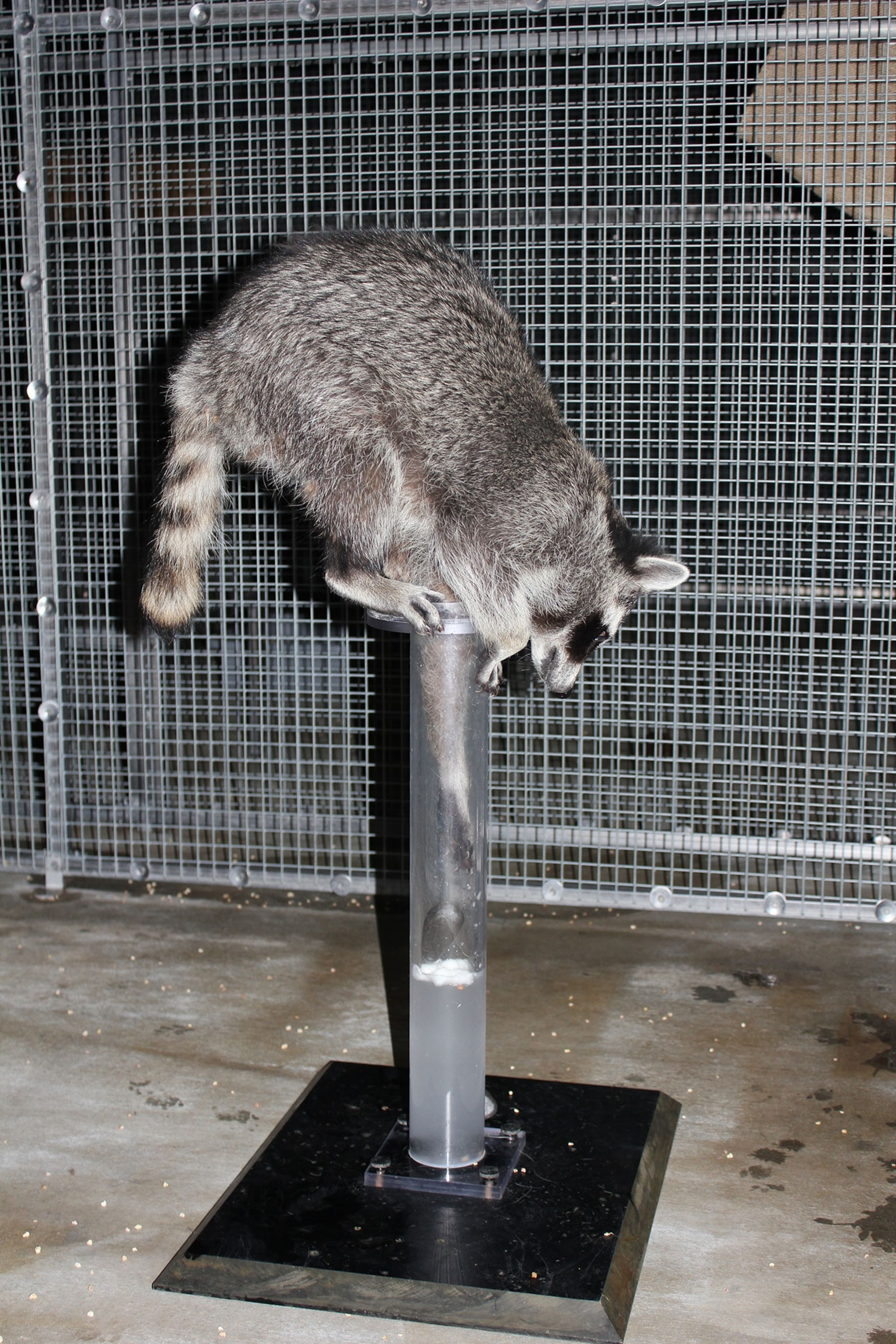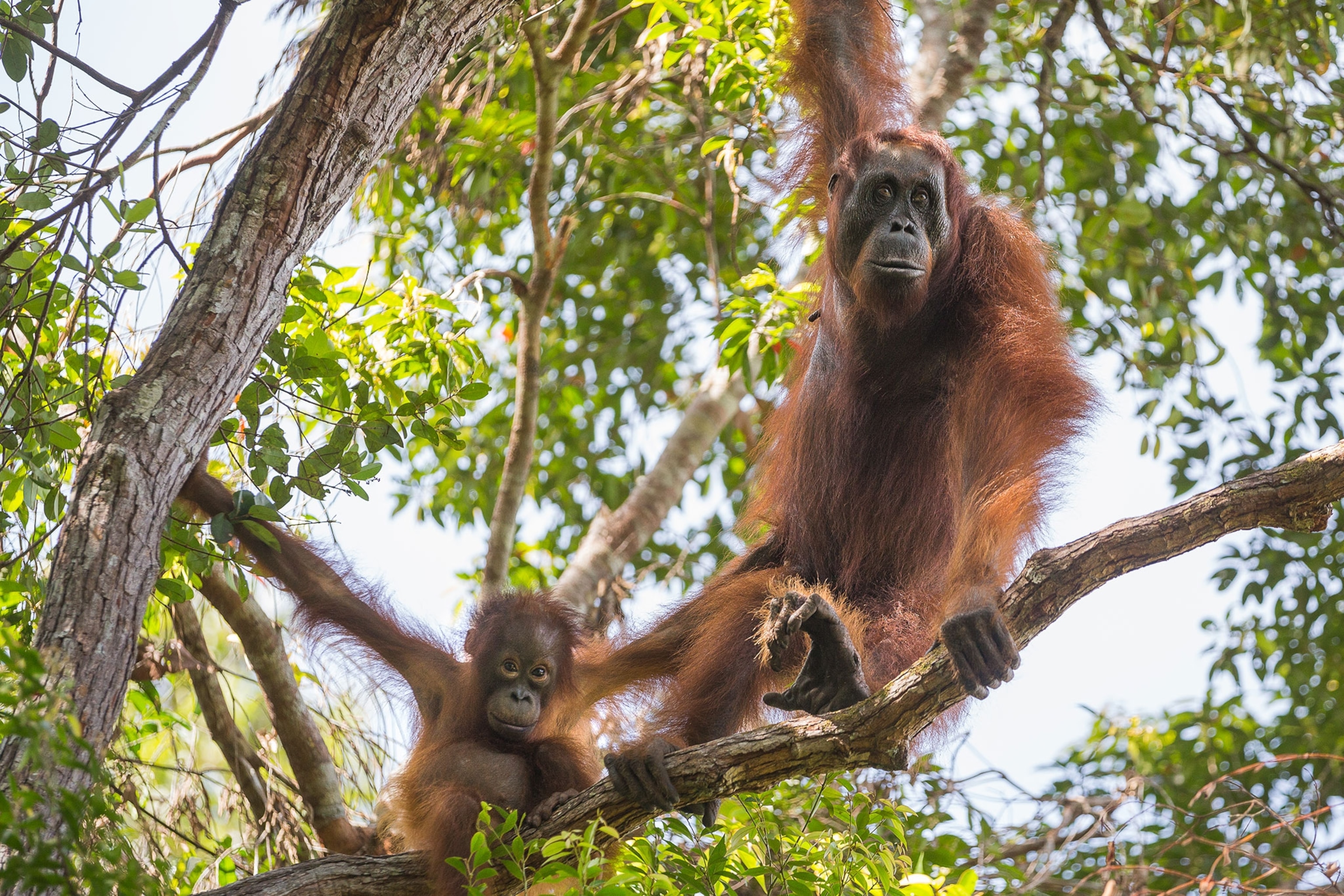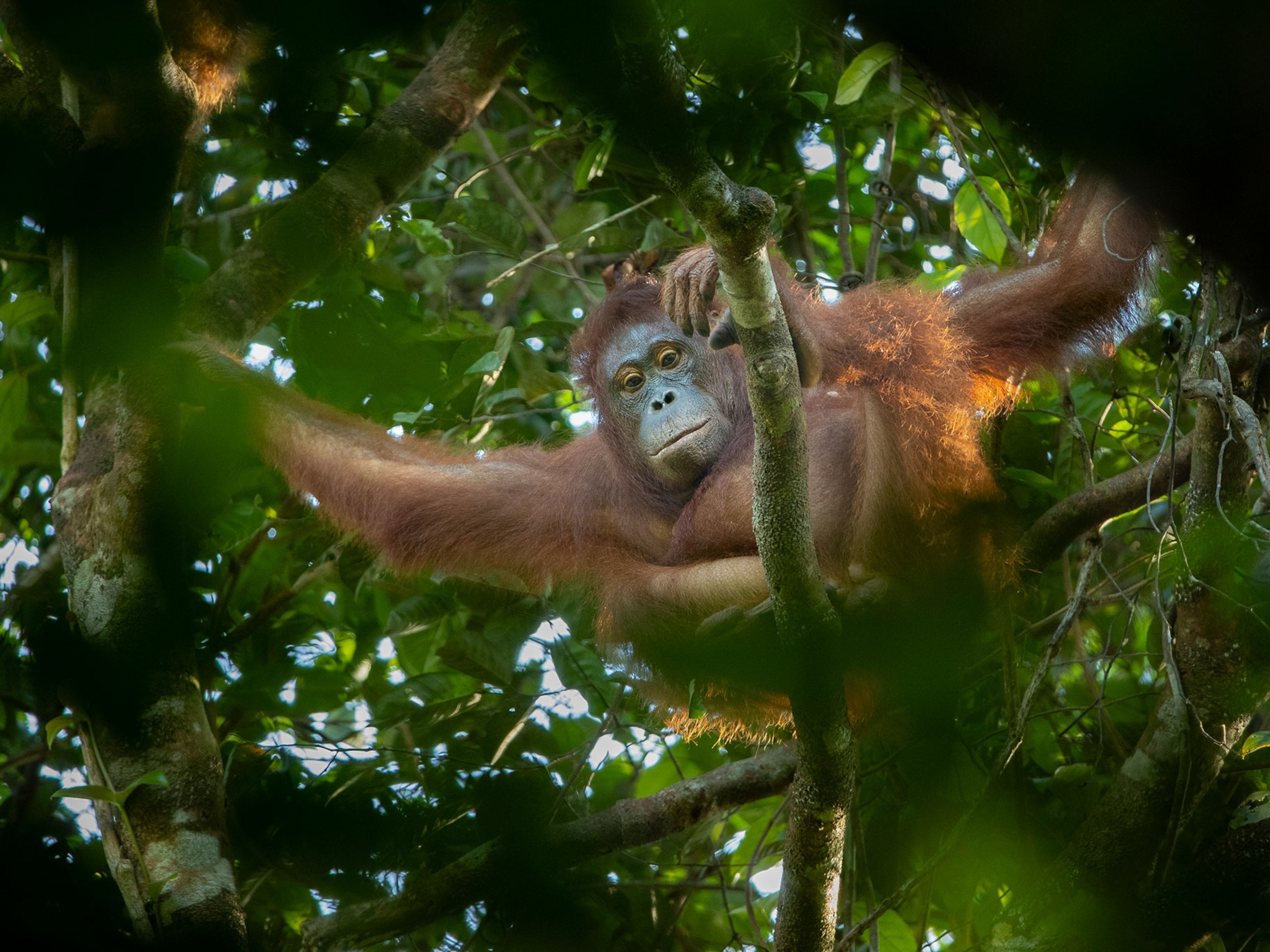Raccoons Pass Famous Intelligence Test—By Upending It
The notoriously clever mammals had their own approach to the Aesop's Fable experiment.
Raccoons are notoriously pesky, but are they as clever as crows?
Scientists recently put the masked mammals through the Aesop's Fable test, which measures if animals can discern cause and effect by displacing water to access food.
The experiment is based on the story in which a thirsty crow can’t drink from a pitcher with a low level of water. By dropping in stones, the bird raises the water level and is able to drink. (Related: "Watch Clever Birds Solve a Challenge From Aesop's Fables.")

In the new study, the researchers presented captive raccoons with a cylinder containing a floating marshmallow that was too low to grab. Next, they showed the raccoons how dropping stones in the water would raise the marshmallow.
(Raccoon Rides Alligator in Florida—Is It For Real?)
Two of the eight raccoons successfully repeated the behavior, dropping the stones to get the marshmallow. A third took matters into her own hands: She climbed onto the cylinder and rocked it until it tipped over, giving her access to the sweet treat.
“That was something we hadn’t predicted,” and indeed, had designed against, says study leader Lauren Stanton, a Ph.D. student at the University of Wyoming.
“It reaffirms how innovative and how creative they are in problem-solving.”
Adds Suzanne MacDonald, a psychologist at York University in Toronto, “I thought it was very raccoon-y that one of them figured out how to just tip the whole apparatus over”—much like they do with trash cans.
Raccoon Superpower
In another experiment, the same eight raccoons were given balls that would sink or float. The scientists thought their subjects would use the sinking balls to displace the water.
The floating ball shouldn’t work, “unless you’re a raccoon, and can turn a non-functional object into a functional object,” says study co-author Sarah Benson-Amran, director of the Animal Behavior and Cognition Lab at the University of Wyoming.
The two raccoons that aced the other tasks excelled yet again, discovering that pushing up and down on the floating balls “would splash bits of marshmallow up the sides of the tubes,” says Stanton, whose study appeared in the November issue of the journal Animal Cognition.
One literally put his own spin on things, seeming to "spin the ball in place" and eating the marshmallow that collected on the ball, Stanton says.

In solving such tasks, raccoons “use their own particular superpower, their sensitive and agile hands, to explore the world,” notes MacDonald, who wasn't involved in the new study. (See "Raccoon Gives Birth in the Backseat of a Camaro.")
Researchers such as MacDonald, Stanton, and Benson-Amran are studying these common backyard animals—often considered a nuisance—to understand more about their behavior and ideally lessen conflicts with people.
Creative Uses for Pee
Though the raccoons didn't necessarily excel at the Aesop's Fable test, they did show incredibly innovative approaches.
Only a few other species are known to pass the test, including corvids—such as New Caledonian crows, rooks, and Eurasian jays—and great apes. (Related: "We Knew Ravens Are Smart, But Not This Smart.")

For instance, in one experiment, orangutans quickly figured out how to spit mouthfuls of water into a tube to grab a peanut floating at the bottom.
In another test, some chimpanzees came up with the solution—and one found that urinating into the tube did the job just fine. (Also see “Growing Teeth and Four More Odd Uses for Urine.”)
Maybe he heard “pee nut” and thought, “Hmmm...”
Have a question about the weird and wild world? Tweet me or find me on Facebook. Weird Animal Question of the Week answers your questions every Saturday.




